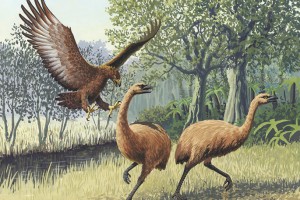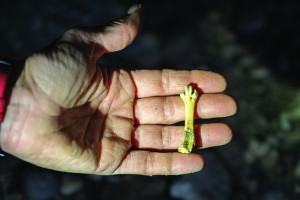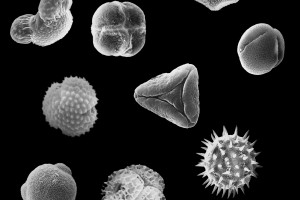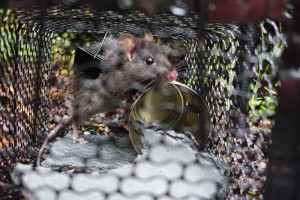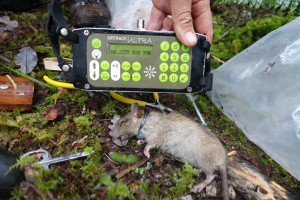Biodiversity display
In this section
-
Visiting Te Rauhītanga – The Gathering Place
- Kōwhaiwhai
- A story of Haumia Tiketike – He kōrero mō Haumia Tiketike
- A story of Rongo – He korero mō Rongo
- A story of Tāne – He kōrero mō Tāne
- Carvings – Whakairo
- The names of our buildings
- The names of our meeting rooms
- Virtual reality: Karanga a Tāne Mahuta
- Rene Orchiston Flax Collection – He Kohinga harakeke nā Rene Orchiston
- Banks and Solander prints
- Invertebrate illustrations
- Biodiversity display
- Weed and predator control display
- Land video wall
- Historic soil maps
- Soil classification illustrations
- Augmented reality sandpit
- Beech tree cores
Our research provides the scientific foundations needed to improve New Zealand’s ability to protect the most threatened species and ecosystems. This ability relies on a deep understanding of ecosystem resilience, tipping points and how various threats – from climate change through to invasive species – affect native species.
Pinned invertebrates from NZAC
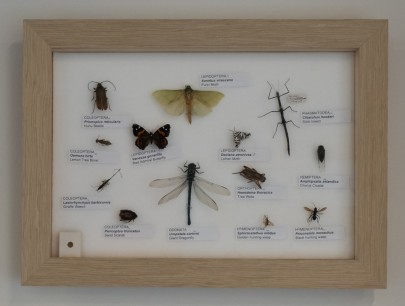
Invertebrate specimens from the New Zealand Arthropod Collection (NZAC)
The New Zealand Arthropod Collection (NZAC) has the most complete coverage of terrestrial invertebrates in New Zealand.
In addition to its fundamental value for the science of taxonomy and systematics, the collection underpins quarantine and border control decisions (e.g., verifying the presence or absence of species in New Zealand for EPA, or for confirming identity of newly arrived potential pests for MPI).
The collection makes important contributions to conservation by identifying threatened species in collaboration with the Department of Conservation. On behalf of Pacific Island nations, the NZAC also holds a large collection of specimens from the Pacific region.
Primary production sectors and researchers in universities and Crown Research Institutes use NZAC as a repository for specimens and a source of information. Identification services are also provided to the general public.
There are about 6.5 million specimens, with >1 million pinned. There are about 2600 primary type specimens. Most specimens are from the New Zealand subregion (about 6 million) and neighbouring Pacific Island Countries (0.5 million).
3D replica moa bones
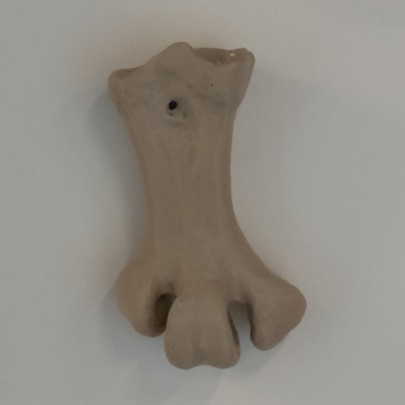
Moa bone
Palaeoecology (the ecology of the past) help further our understanding of the dynamics, function and trajectories of present-day ecosystems.
The Manaaki Whenua Long-Term Ecology Laboratory is dedicated to studying long-term ecological processes (over decades to thousands of years).
Using microscopic and ancient DNA analysis of a variety of sample types (including lake, bog, swamp and cave sediments and preserved droppings (coprolites) of extinct birds and introduced animals) we show how ecosystems have changed over time in response to climate change, natural disturbances (volcanism, earthquakes and fire), initial human arrival, and the introduction of alien vertebrates. Analysing coprolites allows us to gain insights into the lives of extinct birds, determining what plants they ate, what flowers they pollinated, and what seeds they dispersed. From this we can determine the role that extinct birds played in prehuman ecosystems, which helps us understand the legacy of their extinction on the functioning of existing forests.
Seed test tubes
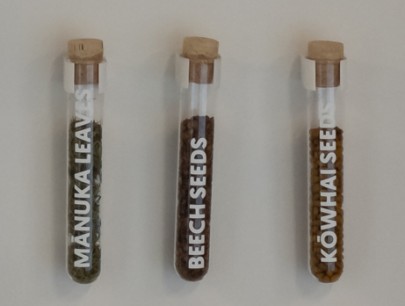
Seeds from mānuka, beech, and kōwhai
Mānuka seeds
Mānuka seeds gathered as part of The Honey Landscape project that aims to create a comprehensive model of New Zealand’s native honey landscape.
Scientists and Māori agribusiness have teamed up to learn more about mānuka DNA variation, beehive stocking rates, and honey bee food resources in a 5-year project that sets out to answer these questions and best maximise this opportunity.
Dr Gary Houliston is leading the Manaaki Whenua component of The Honey Landscape project. The project blends science and tikanga Maori to create a comprehensive model of New Zealand’s native honey landscape. Researchers have been working with Māori landowners to collect leaf samples from natural mānuka stands, extract the DNA, and analyse the data.
Our work in the Honey Landscape project aims for real impact for Māori agribusiness.
Kōwhai seeds
The Chilean kowhai tree, Sophora cassioides, was raised from seed collected by Eric Godley from Chepu River, Chepu, island of Chiloé, Chile, in October 1958.
Along with many of the other kowhai trees growing at Manaaki Whenua’s Lincoln site, it has been included in various studies of natural variation of leaf characters and divaricating growth habitat and in several morphological and DNA genetic studies.
Beech seeds
During mast years (years in which trees produce bumper crops of seeds) in beech forests, populations of invasive rodents increase significantly in response to the increased food supply, which in turn leads to a build-up in populations of stoats. Much higher numbers of rodents and stoats increases predation on indigenous species. Elevated levels of predation further threaten the survival of some endangered species found only in scattered remnant populations.
Researchers are working on models that will successfully predict ‘mega-masts’ or widespread heavy seed production in forests that are likely to trigger subsequent pest outbreaks and predation on native animals and birds.

